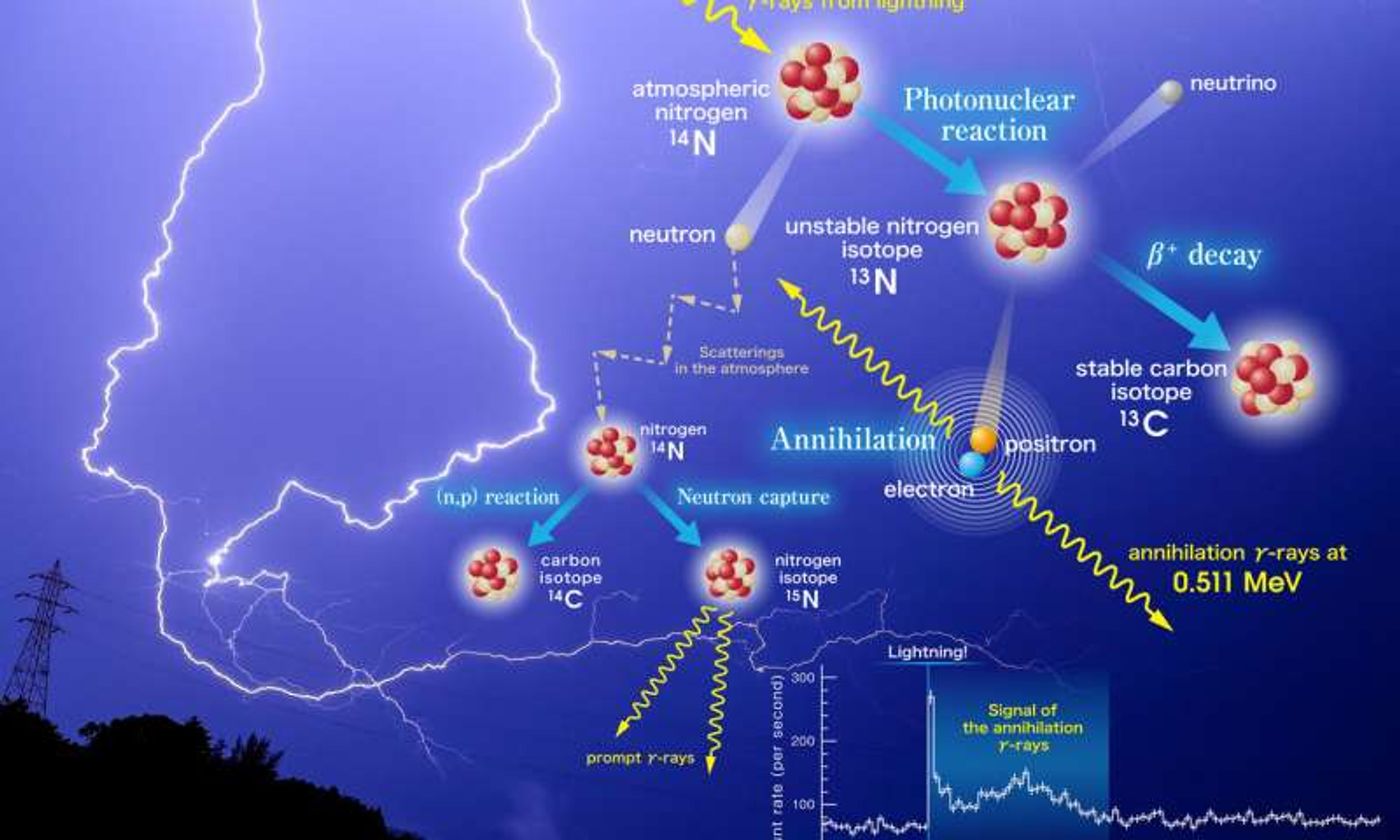Storm, Lightning, Thunder, and Antimatters?
The gamma-ray emission cascades caused by lightning strikes. Credit: Kyoto University/Teruaki Enoto
Lightning and radiation are two words that do not usually appear in the same sentence. Storms hit almost every corner of the planet Earth on a regular basis, and everything about lightning and thunder seem to be well explained in science. But according to the latest published study in the journal Nature, Japanese researchers have discovered a previously unknown mechanism through which lightning give rise to gamma radiation and even antimatters.
This is not the first time scientists have observed the lightning-caused radiation storm. Back in January 2011, NASA's Fermi Gamma-ray Space Telescope has detected beams of gamma radiation emitted by thunderstorms.
Gamma rays (also called gamma radiation), are a type of ionizing electromagnetic radiation that usually arises from the radioactive decay of atomic nuclei. They consist of photons in the highest observed range of energy and have deep penetrating power.
Acting like enormous particle accelerators, the thunderstorms can emit short bursts of gamma-ray radiation, also known as terrestrial gamma-ray flashes (TGFs), as well as high-energy electrons and positrons, the antimatter counterpart of electrons (they have the same mass as electrons, but +1 charge). Scientists now think that most TGFs produce particle beams and antimatter.
"We already knew that thunderclouds and lightning emit gamma rays, and hypothesized that they would react in some way with the nuclei of environmental elements in the atmosphere," explains Teruaki Enoto from Kyoto University, who leads the project.
"In winter, Japan's western coastal area is ideal for observing powerful lightning and thunderstorms. So, in 2015 we started building a series of small gamma-ray detectors, and placed them in various locations along the coast."
In February 2017, four of their detectors in Kashiwazaki, a small city north of Tokyo recorded a large gamma-ray spike immediately after a lightning strike. But their data analysis revealed three distinct gamma-ray bursts.
They were confident that the first one, less than one millisecond in duration, was caused by the lightning strike; but the second (lasted several dozens of milliseconds) and third (lasted about one minute) emission signals were quite puzzling.
Eventually, they have realized that the second afterglow was caused by a nuclear reaction between lightning triggered gamma rays and nitrogen (nitrogen-14) in the atmosphere. The energy level of gamma rays (the first burst recorded by their detectors) was so high that they knock a neutron out of the nitrogen atom. The neutron was later re-absorbed by nearby molecules in the atmosphere, producing the gamma-ray afterglow.
The last prolonged gamma-ray emission was the product of the decay of neutron-deficient nitrogen-13. These atoms decayed by emitting positrons, which subsequently collided with electrons in annihilation events releasing gamma rays.
"We have this idea that antimatter is something that only exists in science fiction. Who knew that it could be passing right above our heads on a stormy day?" says Enoto.
Terrestrial Gamma-ray Flashes Create Antimatter. Credit: NASA
Source: phys.org









